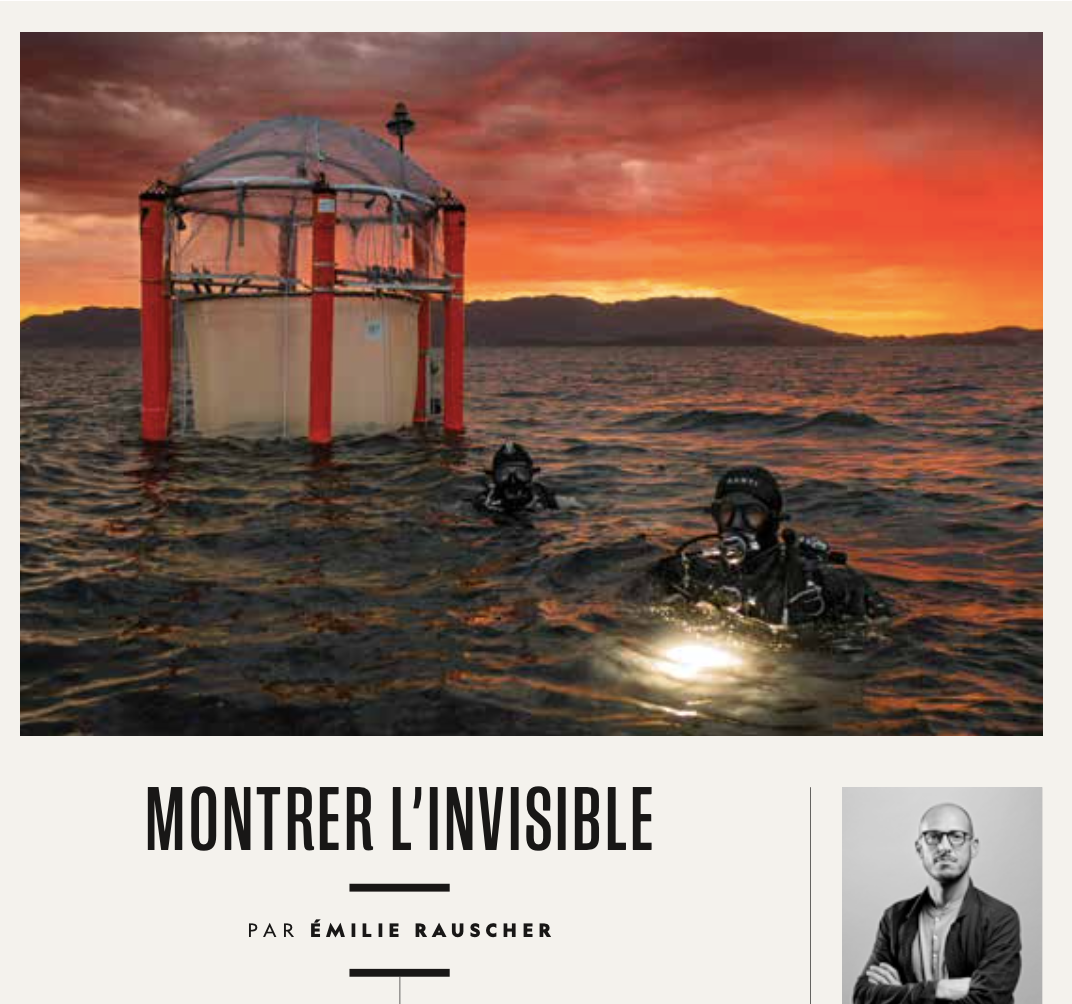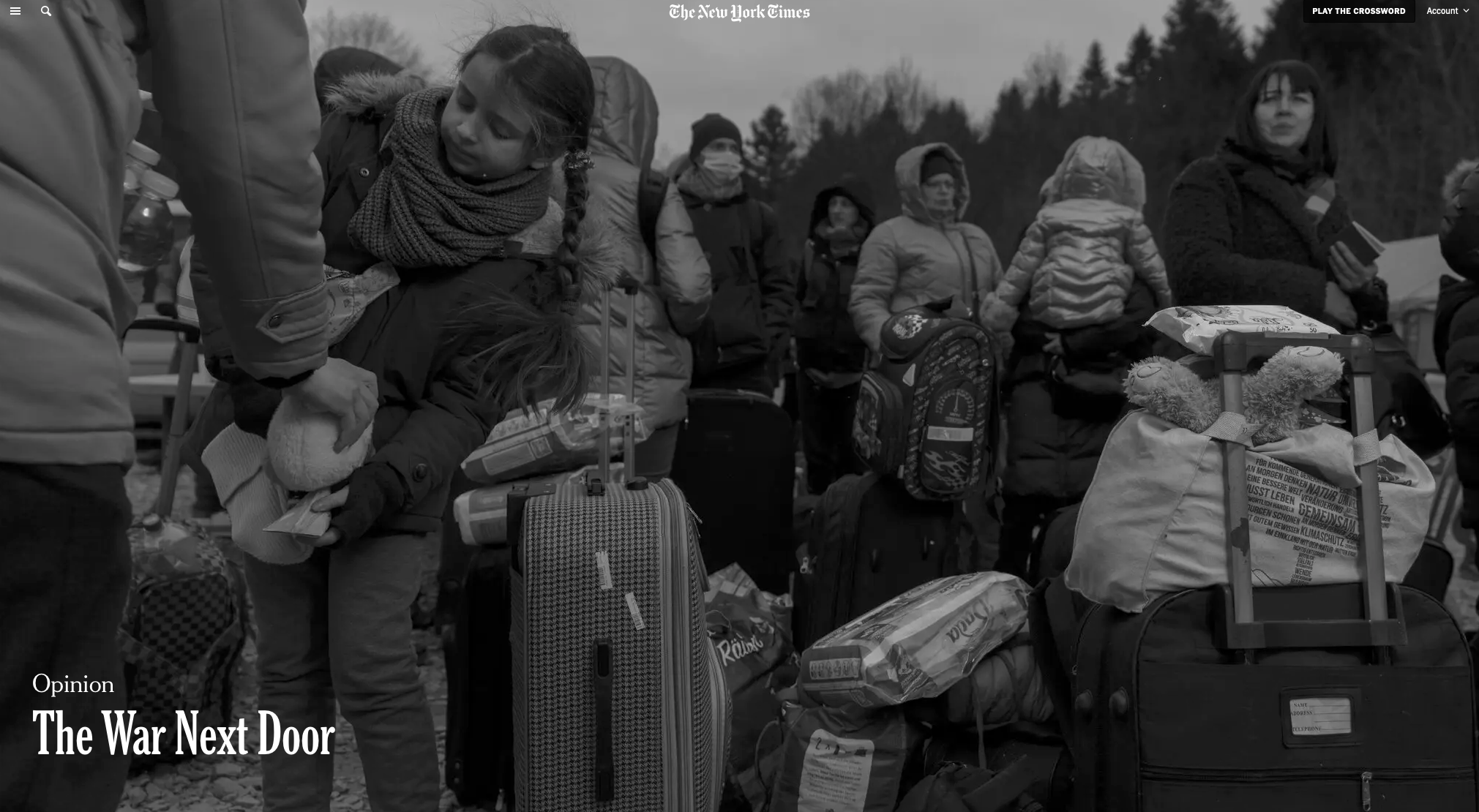
Critical minerals on NRC.NL
Critical Minerals – Geography of Energy, published in NRC. The project is my latest global investigation into the material foundations of the green transition.
Critical Minerals – Geography of Energy, published in NRC. The project is my latest global investigation into the material foundations of the green transition.
Critical Minerals – Geography of Energy, published in The Economist’s 1843 Magazine. The project is my latest global investigation into the material foundations of the green transition. From South America to Southeast Asia and Central Africa, the project documents the extraction and geopolitics behind lithium, cobalt, nickel, and other minerals essential to the clean-energy revolution. Through photography and field reporting, the work reveals the environmental, political, and ethical tensions driving a new global gold rush.
My story about the Swiss canton of Glarus’s Landsgemeinde gatherings is out today on National Geographic.
Switzerland holds more referendums than any country on Earth: up to four national votes a year, plus hundreds more at local and cantonal levels. This isn’t just a quirk; it’s the foundation of the Swiss political system. Through centuries-old tools of direct democracy, ordinary citizens shape laws, challenge decisions, and vote on everything from health insurance to regulations on cow horns. As populism reshapes global politics, the Swiss model offers a radically participatory (and surprisingly stable) alternative.
Texts by Nadia Beard.
Check out the full story here

On May 4, along the shores of Lake Lucerne, in Seelisberg, Switzerland, Aldo Steinfeld went for a ride on his Harley-Davidson. The day was warm and sunny, with stunning panoramic views of the Swiss mountains, and Steinfeld was making the first motorcycle ride powered by fuel created by the sun. I was there to document this trip on assignment for NatGeo US: the fuel was manufactured at the DAWN plant in Julich, Germany, which is owned and operated by Synhelion, a company that researches ways to replace petroleum products with sustainable, synthetic fuels and whose technology Steinfeld has helped pioneer.
Read the full article here.
Imagine a liquid fuel made not from oil, but from sunlight, air, and water. In a landmark scientific journey, researchers at ETH Zurich have developed a synthetic, carbon-neutral fuel that mimics photosynthesis—turning solar energy into liquid hydrocarbons.
In a new cover story for TIME Magazine, I followed the production line of Worldcoin’s Orb, a device designed to prove our humanity in an era of advanced AI. The article explores the tensions between privacy, identity, and digital life as Tools for Humanity races to verify millions through iris scans. I documented the project across continents—from cautious optimism in Seoul to the Orb’s high-stakes launch in the U.S.—highlighting the uneasy balance between innovation and control. Read More.
“Le photographe Davide Monteleone a parcouru le monde pour documenter l'exploitation des terres rares, ces métaux clés pour le développement de technologies de pointe et la transition écologique, devenus objets de toutes les convoitises”
“De l’extraction du lithium chilien à celle du nickel d’Indonésie en passant par le cobalt congolais, le photographe Davide Monteleone explore les sites dans lesquels les industries de la tech viennent puiser les ressources indispensables à la transition énergétique.”

Excited to share my latest publication, Critical Minerals - Geography of Energy, featured as the cover story in the April issue of National Geographic Italia!
This feature deeply delves into the overlooked territories where vital minerals are extracted—resources at the heart of the global shift toward cleaner energy. Yet, behind this push for sustainability, we uncover a web of environmental and human challenges that are too often ignored.
You can read the full story (in Italian) on National Geographic’s website or find it in the print edition.
Thrilled to announce that my project Critical Minerals: The Geography of Energy is featured in a 24-page publication in the latest issue of GEO Germany!


I am proud to announce that one of my images has been selected for the National Geographic Picture of the Year issue, a format that summarizes the finest work of hundreds of NatGeo photographers on the field.
This year’s feature is about my series about the DAWN project, in Germany. The image represents a synthetic fluid, made using sunlight, water, and carbon dioxide, that has the potential to replace fossil fuels. It could be used to power trucks, ships, and planes without retrofitting. In June, Swiss company Synhelion opened the world’s first industrial-scale plant to produce the energy alternative.
Check it out at this link.
To read the full story, please visit NG’s website here.

Critical Minerals exhibition review on Vogue Italia.
The installation, promoted by the Deloitte Foundation and hosted by MUDEC Milano, has been recognized among the current best photography exhibitions in the country.
Check the full article here.

“L’energia pulita è un sogno e una necessità, ma dietro la transizione verde ci sono anche costi sociali e danni ambientali che non conosciamo e che nessuno ci mostra. Il fotografo Davide Monteleone per due anni ha viaggiato nel mondo per raccontare le storie delle materie prime che stanno scrivendo il nostro futuro".”
Grazie a Mario Calabresi. che ha dedicato la sua newsletter settimanale a Critical Minerals, parlando del progetto attraverso un’analisi articolata e attenta.
Clicca qui per saperne di più.

As the 2024 winner project, Critical Minerals - Geography of Energy will be featured in LFI Special Edition magazine, available for purchase at this link.
Preface – Karin Rehn-Kaufmann
Winner 2024
Davide Monteleone: Critical Minerals – Geography of Energy
Newcomer 2024
Maria Guţu: Homeland
Shortlist:
Forough Alaei: Underneath the Calm Streets of Iran
Anush Babajanyan: Nagorno-Karabakh War and Exodus
Emily Garthwaite: Tears of the Tigris
Ksenia Ivanova: Between the Trees of the South Caucasus
Lucas Lenci: Inattention Era
Adriana Loureiro Fernández: Paradise Lost
Sara Meneses Cuapio: Raízhambre
Tong Niu: Express Delivery
Ingmar Björn Nolting: An Anthology of Changing Climate
Etinosa Yvonne: It’s All in my Head
In the fight for less CO2 in the air, ideas are being developed that sound like science fiction. An insight into technologies that are in their infancy - and could change the world.
On Annabelle Magazine
La questione e urgente e pressante: può la tecnologia aiutarci a risolvere la crisi climatica? Davide monteleone ha provato a rispondere a questa domanda, intraprendendo numerosi viaggi in tutta l'europa con il suo team per visitare alcune delle principali istituzioni nel campo delle tecnologie ccus (cattura e stoccaggio del carbonio), che puntano sulla rimozione della co2 dall'atmosfera per contribuire a combattere il riscaldamento globale. Nelle strutture visitate nel corso del reportage si sono viste differenti soluzioni possibili: grandi macchine che estraggono co2 dall'aria, impianti dove l'anidride carbonica viene iniettata nel sottosuolo e contenitori sottomarini che permettono di immagazzinarla sotto il fondale marino. Alcune aziende, inoltre, hanno trovato un modo per riciclare la co, mentre altre coltivano microalghe per assorbirila.
An excerpt from my documentary about the Northern Sea Route from Murmansk (Russia) to Huanghua (China) has been featured on the Italian TV broadcast “Newsroom”. Back in 2012, I embarked on a cargo ship named Nordic Odyssey to follow the Nordic route for commerce, now viable only because of the ice-melting that allows ships to go through a once-impassable way: a tangible effect of climate change.
The episode can be seen at this link.

A few weeks ago, on assignment for National Geographic, I spent a couple of days in Julich, Germany, documenting the official introduction of the DAWN project, the world’s first industrial solar fuel facility.
Synhelion, an innovative spin-off company from ETH Zurich, created the plant to convert CO2 into sustainable fuels, aiming to decarbonize the transportation sector.
Currently in the commissioning phase, DAWN will start producing solar fuels in 2024. The first fuel batches will showcase the potential across various transportation sectors. Looking ahead, Synhelion plans to build a commercial solar fuel plant in Spain by 2025, with a capacity of 1,000 tons of solar fuel per year.
The series is now released on the National Geographic Website.
To read the full article, please click here.
I am proud to announce that two of my images were selected for the National Geographic Picture of the Year issue, a format that summarizes the finest work of hundreds of NatGeo photographers on the field.
You can check them all out at this link.
One of the images of 'Sinomocene' is the cover of AidData's new Belt and Road Reboot report.

The French edition of National Geographic has got in touch to create a “Behind the scenes” insert, in which they asked me to tell the story behind one of the pictures of my series about Carbon Removal. It was fun to retrace the process which led to the creation of one of the most curious images in the project.
Click here to read the full article.
Last year, I embarked on multiple trips throughout Europe with my team to visit some of the leading institutions in the field of CCUS technologies. The result of this work is now released in the National Geographic Magazine’s November issue as a cover story.
A few weeks ago I spent a couple of days documenting the innovative and young company Alps Blockchain, on assignment for Wired.
In the beautiful scenery of the Italian Alps, I got to know a new, interesting entrepreneurial reality that will probably go a long way in its chosen field.

December cover story on the future of mobility for Wired Italia.
“Vor bald zehn Jahren startete China seine Belt-and-Road-Initiative. Viel beschrieben, bleibt sie schwer greifbar. Der italienische Fotograf Davide Monteleone dokumentiert die physische Seite des Megaprojekts.”
———————————————————————————————————————————————————-
"Almost ten years ago, China launched its Belt and Road Initiative. Much described, it remains elusive. Italian photographer Davide Monteleone documents the physical side of the mega-project."
“The landscapes in Davide Monteleone’s images of China’s belt and road initiative are very familiar to me. We can see desert, uninhabited wasteland and views along the Yangtze River and in north-west China. There are also photographs showing the characters “Stay strong, Wuhan!” on skyscrapers in neon lights.
Ai Weiwei

I am continuing to document the refugee crisis on the Ukrainian-Polish border. For the New York Times, with an article by Farah Stockman, I spent a week in the area of Ustrzyki Dolne, where the Polish population has taken steps to welcome refugees from Ukraine.
“The Italian photographer Davide Monteleone has spent nearly twenty years in Russia. It was there, on the eastern border, that he observed the beginnings of the Chinese "New Silk Roads" initiative announced by President Xi Jinping in 2013. A pharaonic investment of $1,000 billion aimed at strengthening the Middle Kingdom's presence in the world, through maritime, road and rail infrastructures. railways. A geopolitical enthusiast, the 48-year-old photographer three times awarded the prestigious World Press prize (2007, 2009 and 2011), embarked in 2014, in a vast enterprise of documentation of the impacts of this expansion. A project for which he received a grant from the National Geography Storytelling Fellows in 2019.”
My work about the epic journey on the Nordic Odyssey cargo ship has been published in Le Chasse Marée magazine.